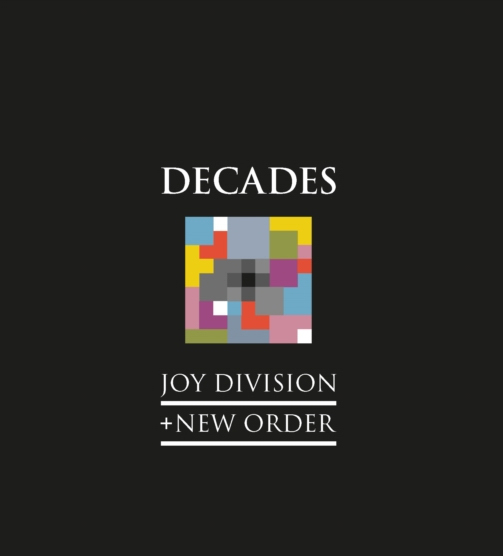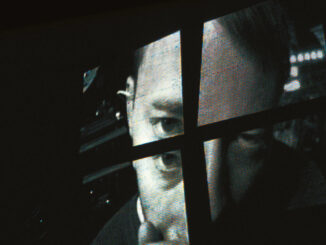
The beginning of Decades: Joy Division + New Order started 45 years ago on 4th June 1976. The venue is the Lesser Free Trade Hall, and the bands playing are the Buzzcocks and the Sex Pistols. The poignancy of this gig was colossal for several reasons: there was very few established Manchester bred punk bands except for Slaughter & the Dogs.
The entrance was just 50p, and many pre-famous celebrities, including Morrissey, Mark. E. Smith and Mick Hucknell were present. However it was two other pre-famous attendees, Bernard Sumner and Peter Hook (Hooky) who had been friends since secondary school who concern this book. The following day they would form a band and recruit singer and lyricist Ian Curtis and drummer Steven Morris. There was a sense of newness and freshness about this band who would eventually settle on the name Joy Division with Aizlewood describing Peter Hook as the first Manchester personality “since cheeky Peter Noone of Herman’s Hermits”.
Aizlewood rightfully makes an acute analysis of the Joy Division founding duo noting how in many ways they were polar opposites. Hooky wore his guitar strap low whilst Bernard wore his high. Even musically Aizlewood describes how Bernard was not as inspired as Hooky was when they both saw Wishbone Ash and Led Zeppelin. Whether these were founding seeds of conflict which led to battles over musical direction with Hooky feeling his bass contributions were downplayed or dismissed when they went on to form New Order with Stephen’s wife Gillian on keyboards immediately after Ian Curtis’ death in 1980; it would lead to Hook leaving the band as New Order made it into the 21st century with subsequent legal suits.
Apart from his premature death in 1980, Aizlewood adroitly examines how Ian Curtis “would be their (Joy Division’s) musical guide” who introduced them to “Kraftwerk records” so they were no longer just another MOR punk band. Aizlewood even examines Ian’s musical influences, which didn’t impact Joy Division’s sound, including reggae. Aizlewood analyses all the bands’ members’ musical influences including drummer Steven Morris’ formative jazz influences courtesy of his father who took him to see Count Bessie live.
Aizlewood also naturally discusses the controversies on the band calling themselves Joy Division. “Joy Divisions”, as described in the novella “House of Dolls” by holocaust survivor Ka-tzetnik 135633 were groups of Jewish women in the concentration camps during World War II who were kept for the sexual pleasure of Nazi soldiers. The novelist also discusses other faux pas including Bernard temporarily changing his surname to “Albrecht” and their first EP cover featuring a Hitler Youth playing the drums on one side and a German soldier pointing a gun at a boy during the Warsaw Uprising on the other.
Aizlewood, as we would expect in a book paying homage, celebrates the turning points such as Curtis appearing on the front cover of the NME in 1979 but also highlights Joy Division’s flops, such as their disastrous London debut show on 27th December 1978 where the door taking were less than petrol costs.
From describing musical influences, Aizlewood also delves into how both Joy Division and New Order recorded tracks throughout the decades. He also draws attention to how no singles were released from LP’s until New Order released their third LP Low-Life in 1985. From pointing out which New Order tracks are synth laden and those that are guitar textured; Aizlewood delves further by showing how the song “Angel Dust” from 1986’s Brotherhood uses the muezzin’s call to prayer.
Furthermore, whilst naturally discussing “Blue Monday”, which was New Order’s biggest hit and the biggest selling 12″ single at the time, it’s what Aizelwood includes when he discusses their second biggest hit: “True Faith” that’s poignant. This 1987 single was never meant to be the lead single and Hooky was disappointed how audibly low his bass was in the final mix.
From 1987 onwards Aizelwood discusses how increased drug use, Hooky and Bernard both getting divorced and increased focus on side projects reduced band creativity and productivity. There was an absence of live shows for four years during 1989 – 1993 and after 1993 there would not be another LP until 2001. Throughout this section Aizelwood delights the reader with lesser known facts. For example, instead of solely focusing on the 1990 England World Cup song New Order recorded featuring John Barnes’ legendary rap and the spiralling debts of the now closed Haçienda nightclub New Order co-owned; the reader also learns how Oasis supported Peter Hook’s now defunct side project Revenge in Oldham in April 1991. Furthermore, whilst writing from the viewpoint of admiration for New Order; Aizelwood is not afraid to say that he felt New Order’s sixth 1993 LP Republic “sounded tired”. However a silver lining is found as Aizelwood positively states that Republic earned New Order thier highest US chart position for an LP: eleven.
Aizlewood also demonstrates that the New Order lived on post-Hooky’s departure. New Order made their live debut in Poland and their tenth LP Music Complete, the first without Hooky, whilst getting many poor reviews; soared to number two in the official charts. As well as recording Peter Hook’s reaction to the new New Order bassist Tom Chapman; Aizelwood also follows Hooky’s career post-New Order which includes co-writing and playing a signature bass on the 2020 Gorillaz track “Aries”.
If one wants to learn all the interesting aspects of both Joy Division and New Order and the individual band members, their management as well as other bands which help tell their story and who were influenced by them; Aizelwood like a superstar DJ knows how and when to drop them. Unlike clubbers in the Haçienda nightclub, readers will keep on reading until the early hours, except they won’t require what Bernard referred to as additional “borrowed energy”.



Be the first to comment